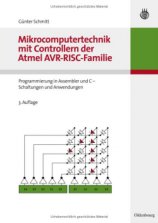fb:porticula NoPaste
Rechnen mit komplexen Zahlen
| Uploader: |  nemored nemored |
| Datum/Zeit: | 12.09.2007 15:27:17 |
type complex
as double real, imag, abs, arg
end type
declare function newCartesian(byval real as double, byval imag as double) as complex
declare function newPolar(byval abs as double, byval arg as double) as complex
declare function complexAdd(byval c1 as complex, byval c2 as complex) as complex
declare function complexSub(byval c1 as complex, byval c2 as complex) as complex
declare function complexMult(byval c1 as complex, byval c2 as complex) as complex
declare function complexDiv(byval c1 as complex, byval c2 as complex) as complex
declare sub polar2cartesian(byref c as complex)
declare sub cartesian2polar(byref c as complex)
function newCartesian(byval real as double, byval imag as double) as complex
' neue komplexe Zahl anhand von Real- und Imaginaerteil definieren
dim as complex ret
ret.real = real
ret.imag = imag
cartesian2polar(ret)
return ret
end function
function newPolar(byval r as double, byval phi as double) as complex
' neue komplexe Zahl anhand der Polarkoordinaten definieren
dim as complex ret
ret.abs = r
ret.arg = phi
polar2cartesian(ret)
return ret
end function
function complexAdd(byval c1 as complex, byval c2 as complex) as complex
' addiert zwei komplexe Zahlen
dim as complex ret
ret.real = c1.real + c2.real
ret.imag = c1.imag + c2.imag
cartesian2polar(ret)
return ret
end function
function complexSub(byval c1 as complex, byval c2 as complex) as complex
' subtrahiert zwei komplexe Zahlen
dim as complex ret
ret.real = c1.real - c2.real
ret.imag = c1.imag - c2.imag
cartesian2polar(ret)
return ret
end function
function complexMult(byval c1 as complex, byval c2 as complex) as complex
' multipliziert zwei komplexe Zahlen
dim as complex ret
ret.abs = c1.abs * c2.abs
ret.arg = c1.arg + c2.arg
polar2cartesian(ret)
return ret
end function
function complexDiv(byval c1 as complex, byval c2 as complex) as complex
' dividiert zwei komplexe Zahlen
dim as complex ret
ret.abs = c1.abs / c2.abs
ret.arg = c1.arg - c2.arg
polar2cartesian(ret)
return ret
end function
sub polar2cartesian(byref c as complex)
' ermittelt Real- und Imaginaerteil, wenn die Polarkoordinaten bekannt sind
dim as complex ret
c.real = c.abs * cos(c.arg)
c.imag = c.abs * sin(c.arg)
end sub
sub cartesian2polar(byref c as complex)
' ermittelt die Polarkoordinaten, wenn Real- und Imaginaerteil bekannt sind
dim as complex ret
c.abs = sqr(c.real^2 + c.imag^2)
if c.abs = 0 then
c.arg = -1
elseif c.imag >= 0 then
c.arg = acos(c.real/c.abs)
else
c.arg = -acos(c.real/c.abs)
end if
end sub
'#############################################
'# Winkel zwischen zwei Strecken berechnen #
'#############################################
const as double Rad2Deg = 45.0/atn(1)
'dim as short mittex = 100, mittey = 100
'dim as short startx = 40, starty = 50
'dim as short zielx = 180, ziely = 80
dim as short mittex = 100, mittey = 100
dim as short startx = 40, starty = 40
dim as short zielx = 150, ziely = 30
dim as double winkel
dim as complex a, b
a = newCartesian(mittex-startx, mittey-starty)
b = newCartesian(mittex-zielx, mittey-ziely)
winkel = (a.arg-b.arg)*Rad2Deg
if winkel < 0 then winkel += 360
screen 18
line (mittex, mittey)-(startx, starty)
line (mittex, mittey)-(zielx, ziely)
print winkel
sleep



 FreeBASIC-Nachrichten jetzt auch über Twitter erhalten. Follow us!
FreeBASIC-Nachrichten jetzt auch über Twitter erhalten. Follow us!


